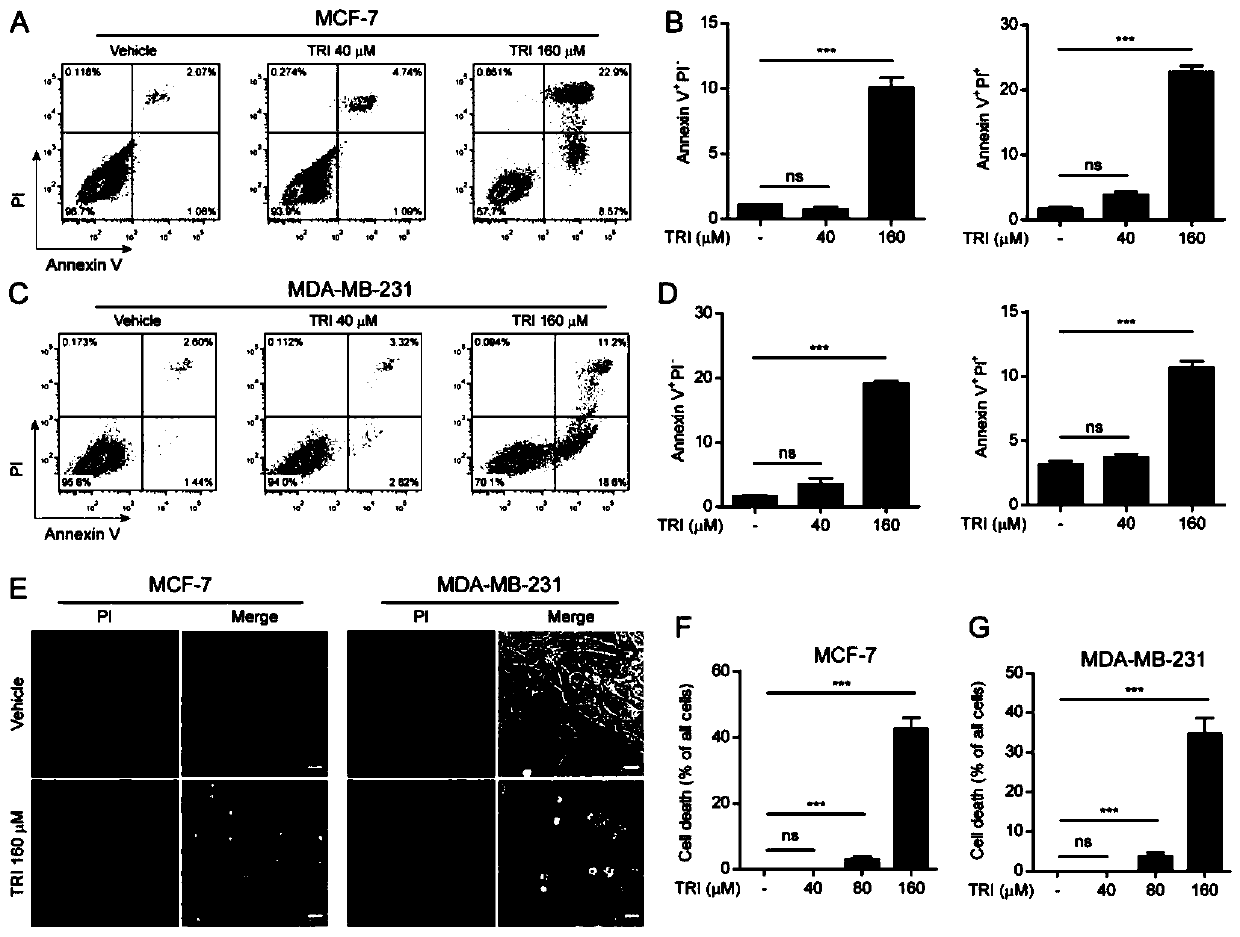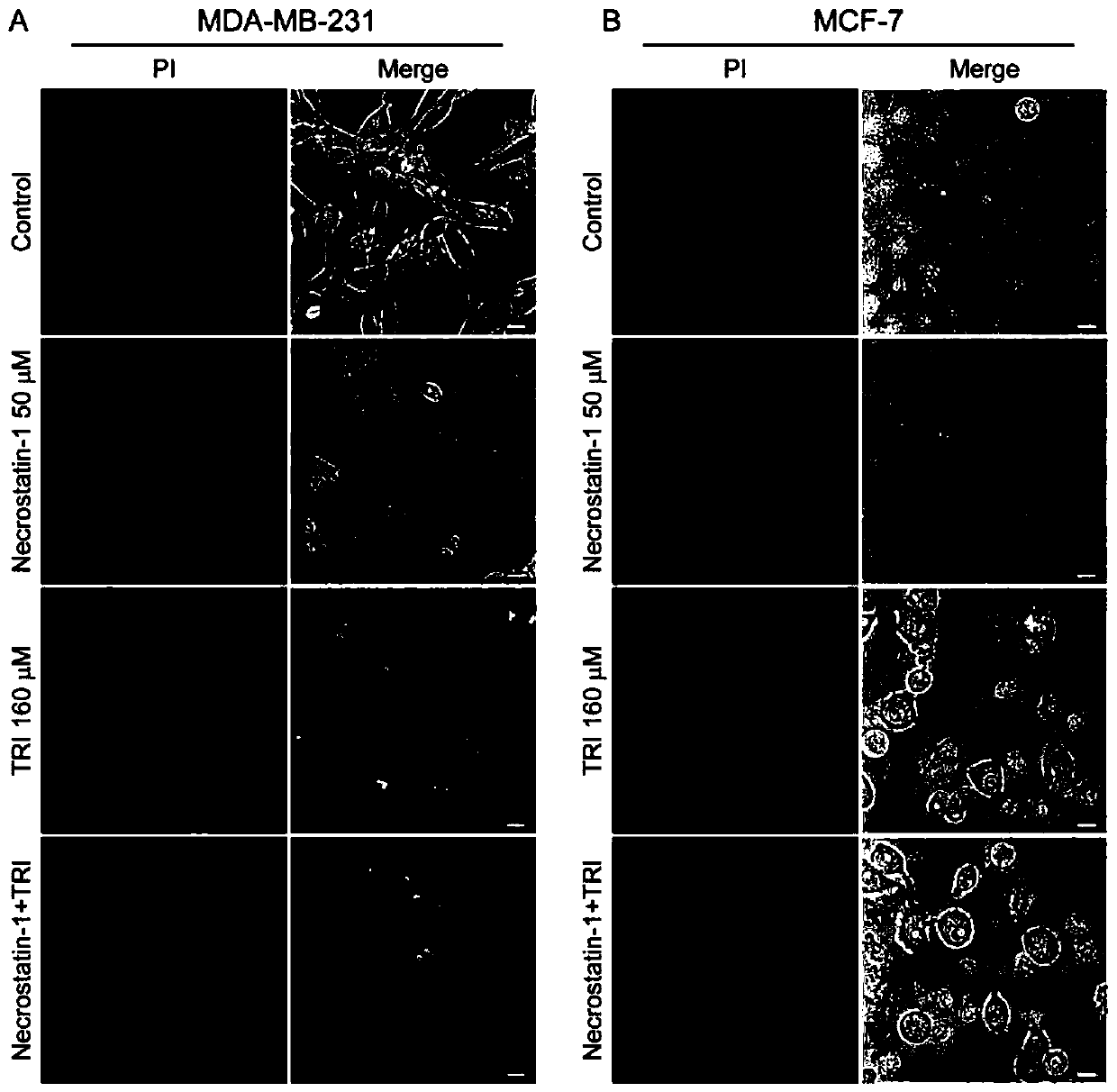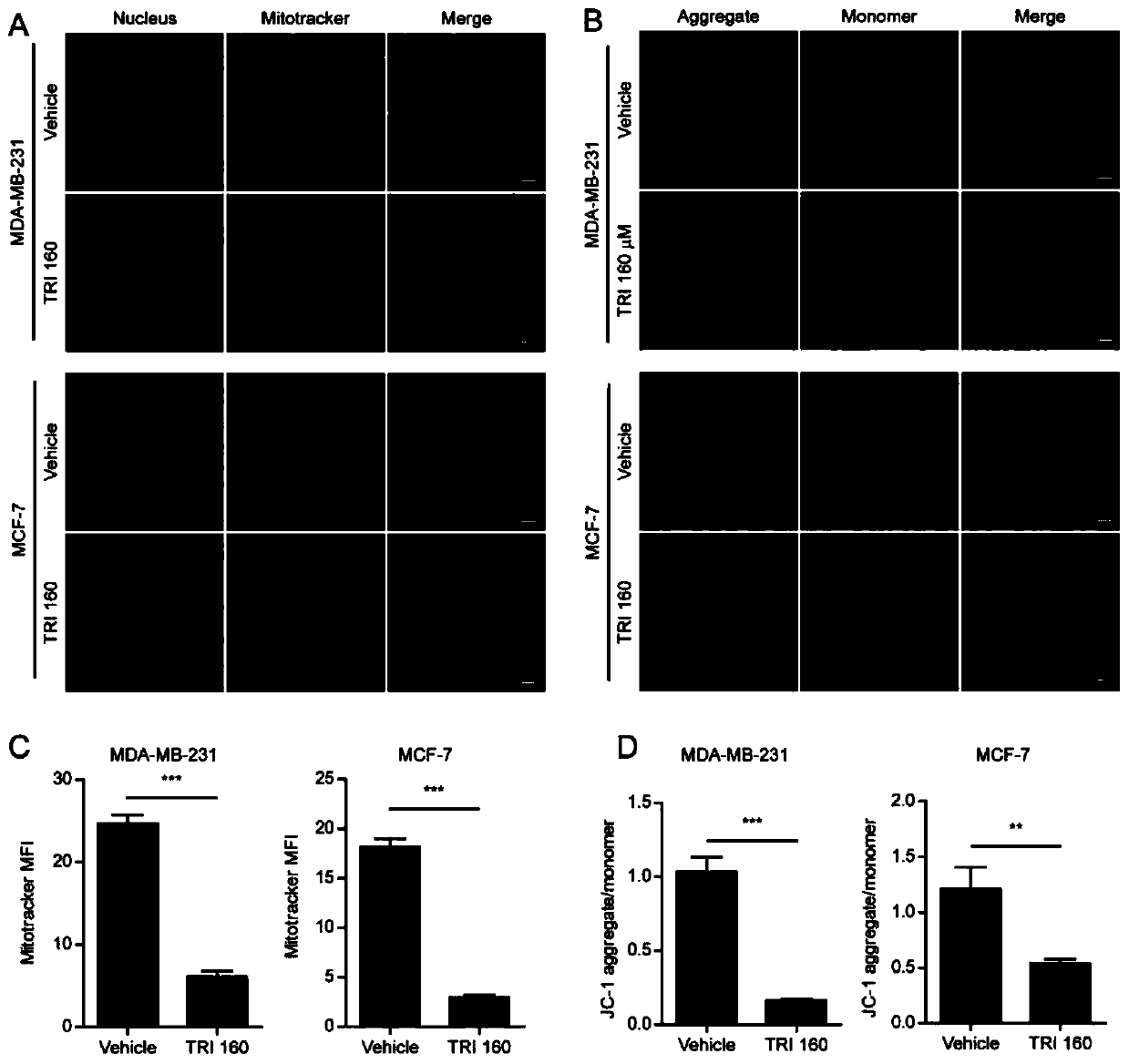Application of triclabendazole in preparation of drugs for treating breast cancer
A technology for triclobendazole and breast cancer, which is applied in the field of preparation of drugs for treating breast cancer, can solve the problems of destroying cell permeability barrier, secondary necrotic cells, pyroptosis and the like
- Summary
- Abstract
- Description
- Claims
- Application Information
AI Technical Summary
Problems solved by technology
Method used
Image
Examples
Embodiment 1
[0024] Example 1: Using breast cancer cells MCF-7 and MDA-MB-231 as cell models, verifying that triclabendazole induces apoptosis and lytic cell death in breast cancer cells:
[0025] To determine the effect of triclabendazole on breast cancer MCF-7 and MDA-MB-231 cells, breast cancer cells MCF-7 or MDA-MB-231 cells were treated with the indicated concentrations of triclabendazole (TRI) for 24 Hour. The CCK-8 assay was used to determine the cytotoxicity of the drug in these cells. Such as figure 1 Shown:
[0026] figure 1 In A and C are: MCF-7 and MDA-MB-231 cells were stained with Annexin V-FITC and PI, and then analyzed by flow cytometry. The proportion of cells shown in each quadrant of a representative dot plot of the flow cytometer.
[0027] figure 1 B and D in A and C are the quantitative analysis of the ratio of apoptotic cells to necrotic / suppurative cells, where the ordinate Annexin-V- / PI- represents living cells, Annexin-V+ / PI- represents apoptotic cells, Anne...
Embodiment 2
[0032] Example 2: Verification that triclabendazole induces breast cancer cell apoptosis through the intrinsic apoptosis pathway:
[0033]Triclobendazole is an effective apoptotic anti-fluke drug, which effectively exerts anti-fluke effect by destroying and interfering with the function of Tubulin. Cells were treated with 160 μM triclabendazole to try to further explore whether it can pass through the intrinsic apoptotic pathway Induces apoptosis in breast cancer cells.
[0034] First, mitochondria are labeled with a mito-tracker, which passively diffuses across the plasma membrane and accumulates in active mitochondria. The results showed that triclabendazole significantly decreased the activity of mitochondria in MCF-7 and MDA-MB-231 cells. In addition, mitochondrial membrane potential was detected using JC-1 staining, and the results showed that triclabendazole was able to reduce the level of JC-1 aggregates (red) and their ratio to JC-1 monomers (green), indicating a decr...
Embodiment 3
[0040] Example 3: Potential Mechanisms of Triclabendazole-Induced Apoptosis and Lytic Cell Death in Breast Cancer Cells:
[0041] MCF-7 cells were treated with trimendazole at the indicated concentrations for 24 hours, and protein markers of apoptosis were analyzed by Western blot, including Bax, bcl-2, cleaved-caspase-9, cleaved-caspase-8, cleaved-caspase-3 , cleaved-caspase-7 and cleaved-PARP.
[0042] Recently, gasdermin E (GSDME) has been shown to be a target protein of both intrinsic and extrinsic apoptotic pathways, and activated caspase-3 induces the formation of the GSDME-N domain (37 kDa) and targets the membrane to form holes, leading to pyroptosis. We next explored whether GSDME is expressed and cleaved to form the GSDME-N domain in drug-treated cells. Such as Figure 4 and Figure 5 Shown:
[0043] Figure 4 and Figure 5 A in A is a marker protein for detection of apoptosis and lytic cell death by Western blot; β-actin was used as a control.
[0044] Fig...
PUM
 Login to View More
Login to View More Abstract
Description
Claims
Application Information
 Login to View More
Login to View More - R&D
- Intellectual Property
- Life Sciences
- Materials
- Tech Scout
- Unparalleled Data Quality
- Higher Quality Content
- 60% Fewer Hallucinations
Browse by: Latest US Patents, China's latest patents, Technical Efficacy Thesaurus, Application Domain, Technology Topic, Popular Technical Reports.
© 2025 PatSnap. All rights reserved.Legal|Privacy policy|Modern Slavery Act Transparency Statement|Sitemap|About US| Contact US: help@patsnap.com



